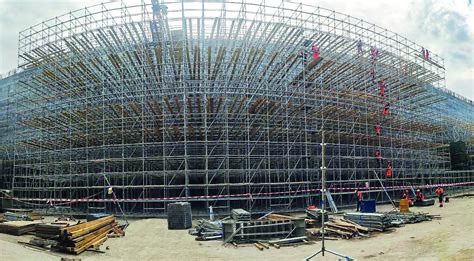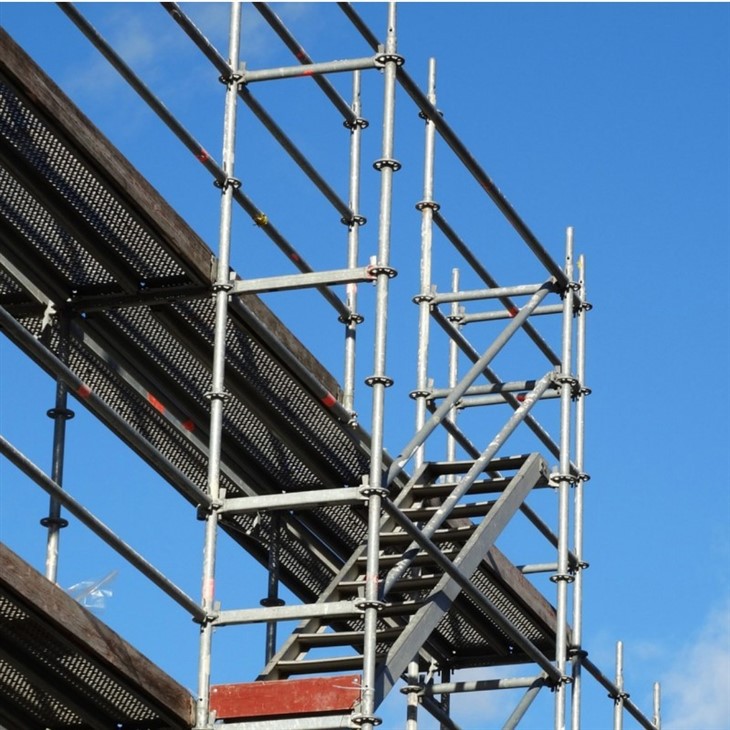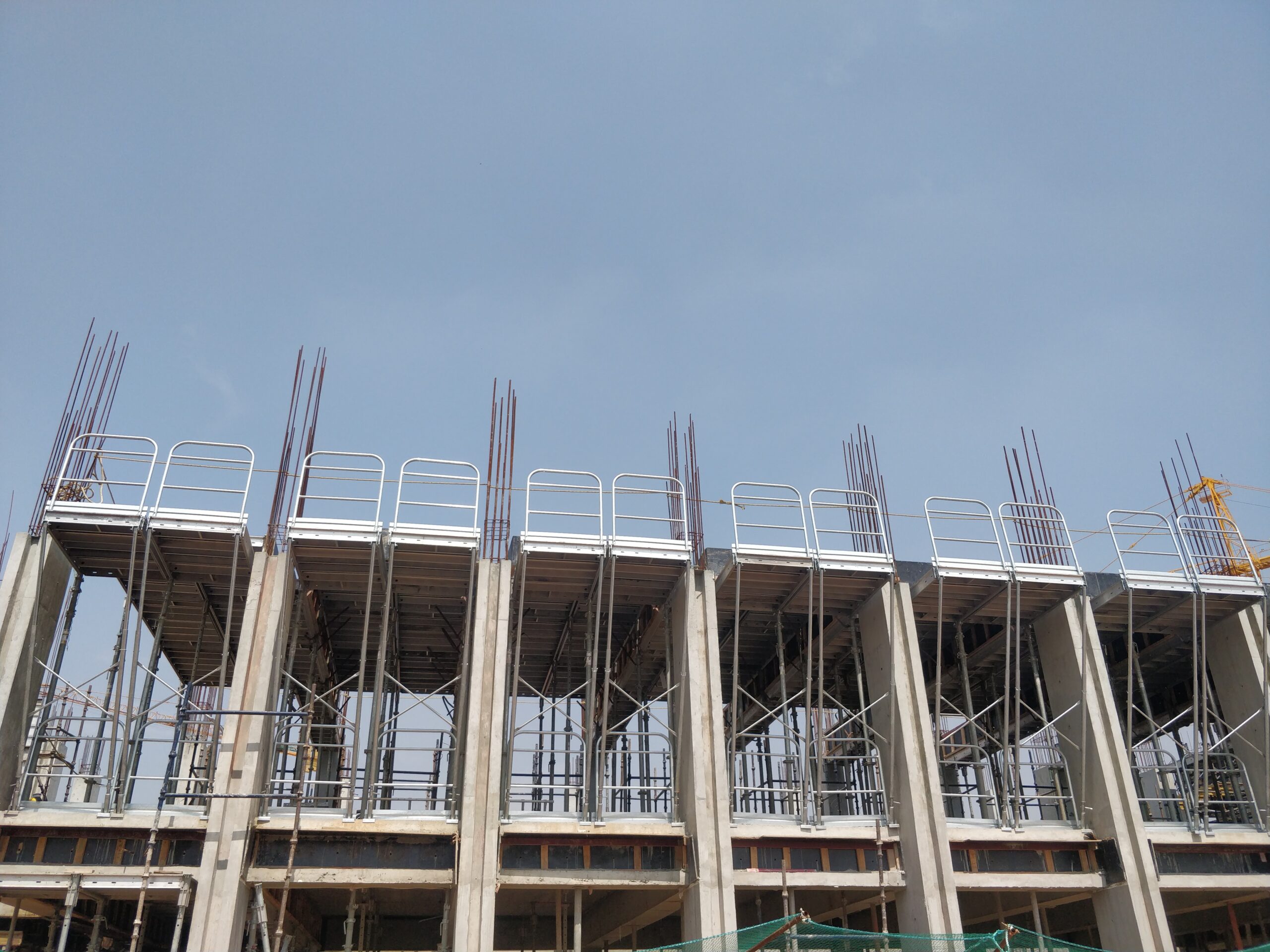Content Menu
● Introduction to Ringlock Scaffolding
● Preparation Before Installation
>> 1. Site Inspection and Ground Preparation
>> 2. Component Inspection
>> 3. Personal Protective Equipment (PPE)
>> 4. Tools and Equipment
● Step-by-Step Installation Guide
>> Step 1: Assemble the Base
>> Step 2: Connect Ledgers and Transoms
>> Step 3: Erect Additional Standards and Levels
>> Step 4: Install Diagonal Bracing
>> Step 5: Install Working Platforms and Safety Features
>> Step 6: Final Inspection
● Best Safety Practices During Installation
● Step-by-Step Dismantling Guide
>> Step 1: Clear the Scaffold
>> Step 2: Remove Working Platforms
>> Step 3: Detach Diagonal Braces
>> Step 4: Remove Ledgers and Transoms
>> Step 5: Lower Vertical Standards
>> Step 6: Final Site Cleanup
● Common Challenges and Troubleshooting
● Maintenance and Inspection of Ringlock Scaffolding
>> Routine Inspections
>> Periodic Maintenance
>> Documentation
● Conclusion
● FAQ
>> 1. What tools are required for installing Ringlock scaffolding?
>> 2. How important is ground preparation before erecting Ringlock scaffolding?
>> 3. Can Ringlock scaffolding be installed by one person?
>> 4. What safety measures should be taken during dismantling?
>> 5. How often should Ringlock scaffolding be inspected?
Ringlock scaffolding is widely recognized for its modular design, ease of assembly, and superior safety features. To maximize these benefits on any construction site, following best practices during installation and dismantling is essential. This comprehensive guide covers step-by-step instructions, safety tips, and expert recommendations to ensure efficient and safe use of Ringlock scaffolding.

Introduction to Ringlock Scaffolding
Ringlock scaffolding is a modular scaffolding system featuring a unique ring node design that allows for quick, tool-free connections between vertical standards, horizontal ledgers, and diagonal braces. Its robust steel components provide high load-bearing capacity and stability, making it ideal for a wide range of construction projects, from residential buildings to large industrial sites.
The system's flexibility enables easy adaptation to complex structures and uneven terrain, while its safety features—such as integrated guardrails and harness attachment points—help protect workers during both assembly and use.
Preparation Before Installation
Proper preparation is critical to ensure a smooth and safe installation of Ringlock scaffolding.
1. Site Inspection and Ground Preparation
- Clear the installation area of debris, obstructions, and hazards.
- Ensure the ground is level, firm, and capable of supporting the scaffold's weight and intended loads.
- Use base plates or adjustable base jacks to distribute weight evenly, especially on soft or uneven surfaces.
- Maintain a safe distance from power lines and other electrical hazards.
2. Component Inspection
- Verify that all components—standards, ledgers, diagonals, base jacks, castor wheels, and planks—are present and free from defects or damage.
- Replace any worn or damaged parts before proceeding.
3. Personal Protective Equipment (PPE)
- Ensure all workers have appropriate PPE, including hard hats, gloves, high-visibility clothing, safety boots, and fall arrest harnesses if required.
- Provide training on PPE use and scaffold safety procedures.
4. Tools and Equipment
- Have necessary tools ready, such as wrenches for tightening support heads and safety harnesses for fall protection.
- Use signage to mark the scaffold area and restrict unauthorized access.
Step-by-Step Installation Guide
Step 1: Assemble the Base
- Lay out base plates or base jacks at designated intervals.
- Attach base jacks to vertical standards (vertical posts).
- Position standards upright, ensuring vertical alignment.
Step 2: Connect Ledgers and Transoms
- Insert horizontal ledgers into the ring nodes on the standards at the lowest level.
- Secure ledgers firmly by knocking in wedges or locking pins as per manufacturer instructions.
- Install transoms (U-shaped ledgers) to support working platforms.
Step 3: Erect Additional Standards and Levels
- Add vertical standards to extend the scaffold height as required.
- Connect ledgers and transoms at each level, maintaining consistent spacing.
Step 4: Install Diagonal Bracing
- Position diagonal braces at approximately 45-degree angles on scaffold corners and bays.
- Secure diagonal braces to ring nodes using the locking mechanism.
- Diagonal bracing enhances structural rigidity and resistance to lateral forces.
Step 5: Install Working Platforms and Safety Features
- Place steel planks or decking on transoms to create stable working platforms.
- Install toe boards along platform edges to prevent falling objects.
- Attach guardrails and midrails on all open sides to provide fall protection.
- Ensure internal ladders or stairways are installed for safe access to different levels.
Step 6: Final Inspection
- Conduct a thorough inspection of the entire scaffold structure.
- Check all connections for tightness and proper locking.
- Verify the scaffold is plumb, level, and stable.
- Confirm safety features are correctly installed and functional.

Best Safety Practices During Installation
- Supervision: Installation and dismantling must be supervised by a qualified or competent person.
- Communication: Maintain clear communication among workers during assembly.
- Fall Protection: Use safety harnesses attached to designated points during erection at heights above 2 meters.
- Avoid Overloading: Do not exceed load ratings for any scaffold component or platform.
- Weather Conditions: Avoid erecting or dismantling scaffolding in high winds, rain, or icy conditions.
- No Unauthorized Access: Restrict scaffold use to trained personnel only.
- Proper Use of Tools: Use appropriate tools and avoid makeshift equipment.
- Lock Castor Wheels: If the scaffold is mobile, ensure castor wheels are locked before use.
Step-by-Step Dismantling Guide
Step 1: Clear the Scaffold
- Remove all tools, materials, and debris from platforms.
- Remove guardrails and toe boards carefully.
Step 2: Remove Working Platforms
- Lift steel planks or decking off transoms.
- Store platforms safely to avoid damage.
Step 3: Detach Diagonal Braces
- Remove diagonal braces starting from the top level down.
- Use a wrench or appropriate tool to unlock brace heads.
Step 4: Remove Ledgers and Transoms
- Detach horizontal ledgers and transoms from ring nodes.
- Lower components safely to the ground with assistance.
Step 5: Lower Vertical Standards
- Remove vertical standards systematically from the top down.
- Use base jacks to support standards as they are lowered.
Step 6: Final Site Cleanup
- Collect all components and inspect for damage.
- Store scaffolding parts in a dry, secure location for future use.
- Conduct a site inspection to ensure no hazards remain.
Common Challenges and Troubleshooting
- Uneven Ground: Use larger sole boards or adjustable base jacks to stabilize.
- Component Damage: Regular inspection and replacement prevent unsafe conditions.
- Improper Locking: Always double-check ring node connections and wedges to avoid loose fittings.
- Weather Delays: Plan scaffold work around weather forecasts to avoid risks.
- Access Issues: Use internal ladders rather than external ladders to reach higher platforms safely.
Maintenance and Inspection of Ringlock Scaffolding
Regular maintenance and inspection of Ringlock scaffolding are vital to ensure ongoing safety and functionality.
Routine Inspections
- Conduct visual inspections before each use to check for rust, cracks, or deformation.
- Inspect locking mechanisms and ring nodes for wear or damage.
- Verify that guardrails, toe boards, and access points are secure and intact.
Periodic Maintenance
- Clean components to remove dirt, grease, or debris that may affect connections.
- Apply protective coatings or galvanization touch-ups to prevent corrosion.
- Replace any damaged or worn parts immediately to maintain structural integrity.
Documentation
- Maintain inspection logs detailing dates, findings, and corrective actions.
- Train personnel to recognize signs of scaffold deterioration and report issues promptly.
Conclusion
Following best practices for installing and dismantling Ringlock scaffolding is crucial to maximizing its benefits in site efficiency and worker safety. Proper site preparation, systematic assembly, and strict adherence to safety protocols ensure a stable, secure scaffold structure. Equally important is careful dismantling to prevent accidents and preserve equipment integrity. Regular maintenance and inspections further guarantee the longevity and safety of the scaffolding system. With comprehensive training, appropriate tools, and vigilant supervision, Ringlock scaffolding can be safely and efficiently used across diverse construction projects.

FAQ
1. What tools are required for installing Ringlock scaffolding?
Basic tools include wrenches for tightening support heads and wedges, hammers for knocking in wedges, and safety harnesses for fall protection. Most connections are tool-free but securing diagonal braces may require tools.
2. How important is ground preparation before erecting Ringlock scaffolding?
Ground preparation is critical. The site must be level and firm to support the scaffold's weight. Use base jacks and sole boards on soft or uneven surfaces to ensure stability.
3. Can Ringlock scaffolding be installed by one person?
While possible for small setups, it is highly recommended to have at least two trained workers for safety and efficiency during assembly and dismantling.
4. What safety measures should be taken during dismantling?
Remove all materials first, use proper PPE, maintain communication, dismantle from the top down, and ensure no one is below the scaffold during removal of components.
5. How often should Ringlock scaffolding be inspected?
Scaffolding should be inspected before use each day, after any modifications, and following adverse weather conditions to ensure ongoing safety and structural integrity.






















